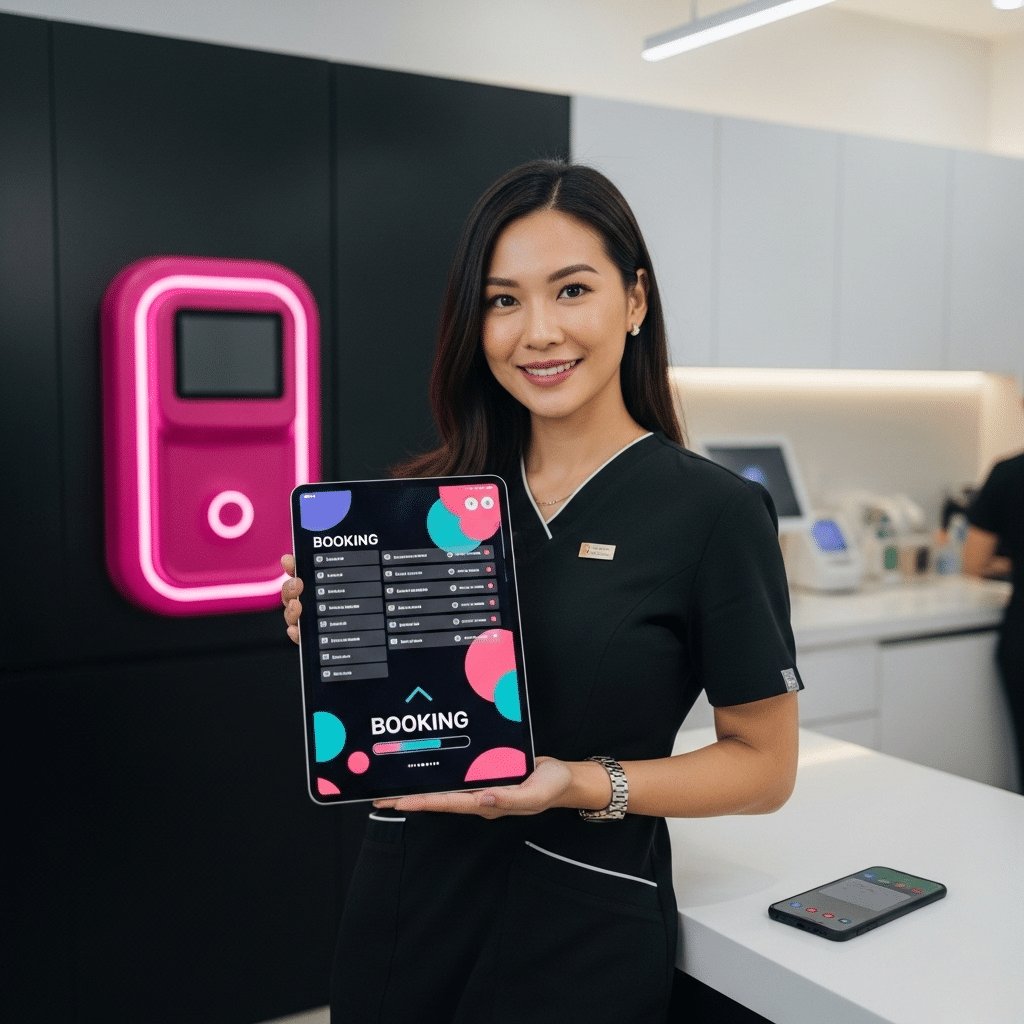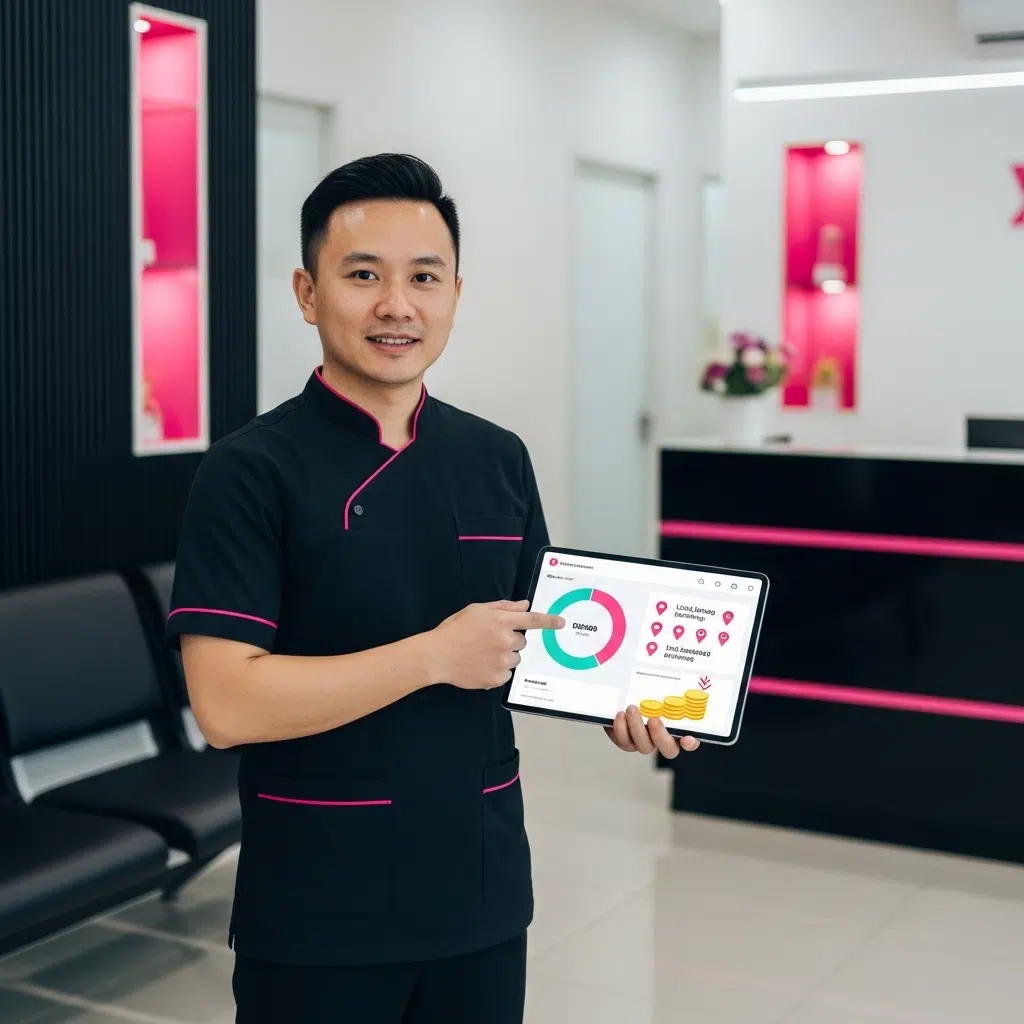

You’re running a clinic, and every day you’re juggling patient care, staff management, and keeping up with the latest digital trends. It’s a lot, especially when it comes to online marketing. From our experience working with over 90 clinics, we see a common challenge: many practices heavily invest in social media, pouring time and resources into platforms like Facebook and Instagram. Yet, they struggle to convert those followers and likes into actual booked appointments or walk-ins. Why?
Often, it boils down to the absence of a strong, compliant, and conversion-focused clinic website, coupled with a robust local search presence. Think of it this way: social media is like renting a storefront in a busy mall. You get visibility, but you’re subject to the mall’s rules, algorithm shifts, and limited data control. Your website, on the other hand, is your owned property—a professional, controlled hub central to building trust, ensuring compliance, and delivering a seamless patient experience[1] [3][5].
Here’s what actually works for clinics wanting to show up on Google: Patients actively searching on Google Search and Google Maps are often ready to visit or book an appointment *right now*. If they don’t find your clinic’s website or your optimized Google Business Profile (GBP), they choose a competitor. It’s that simple [1] [4]. So, are you inadvertently leaving money on the table?
Let’s dive deeper into the real problems that arise when your online strategy prioritizes social media over a solid web presence and local SEO:
Imagine a patient experiencing a sudden toothache or needing an urgent consultation. What’s the first thing they do? They don’t typically scroll through Instagram. They go straight to Google. Statistics show that a significant 78% of local searches in our region result in a physical visit within 24 hours [4]. This means that visibility on Google Search and Maps can directly translate into immediate clinic footfall. If your practice isn’t easily found when patients are actively searching for a solution, you’re missing out on precisely the kind of high-intent patients who are ready to book.
Google undeniably dominates the search market share locally [4]. Underinvesting in local SEO and a robust website isn’t just a minor oversight; it’s a costly gap that sends potential patients directly to your competitors who *are* optimized.
It’s true that social media penetration in our region is remarkably high, with over 70.2% of the population actively using these platforms [2]. This makes social media an excellent channel for building awareness, sharing health tips, and engaging with your community. You can reach a vast audience, grow your follower count, and generate plenty of likes and shares. However, reach alone doesn’t automatically translate into booked appointments. A strong social media presence is the start of the conversation, but without a powerful website and a clear local search funnel, that conversation often leads nowhere. People see your posts, they might even like them, but if there’s no clear, easy, and trusted path to booking, they simply move on.
The evolving digital health landscape locally emphasizes the need for robust, secure, and compliant digital services. This is much easier to achieve and maintain on owned platforms like your clinic’s website than on third-party social networks [3]. When you build your presence primarily on social media, you surrender control over your patient data and are subject to the platform’s terms of service, which can change at any moment. Local healthcare and pharma marketing trends are increasingly shifting toward data-driven strategies, making the ownership and secure handling of patient data, along with ensuring regulatory compliance, absolutely critical [5]. Your website allows you to implement stringent security measures and privacy policies that protect sensitive patient information, something largely outside your control on social platforms.
Digital health services are experiencing rapid growth, and with this growth comes a significant shift in patient expectations. Patients now anticipate convenient online access—from booking appointments to accessing information about services and doctors [6]. These expectations are best met by a fast, trustworthy, and user-friendly website that offers clear information, easy navigation, and seamless online booking functionalities. Social media can tease this, but only a dedicated website can truly deliver on these modern demands, providing a comprehensive and reassuring digital experience for your patients.
So, what’s the solution? It’s not about choosing one over the other, but integrating them strategically. The core strategy is simple: make your website the ultimate conversion hub, dominate local search on Google, and then use social media to build awareness, engage, and retarget website visitors into actual bookings.
Your clinic’s website needs to be more than just an online brochure; it needs to be a powerful engine for patient acquisition. This means building credibility and trust through high-quality content, clear doctor profiles, and authority (E-A-T – Expertise, Authoritativeness, Trustworthiness). It also means ensuring lightning-fast speed and a frictionless booking user experience (UX) [1]. Your website is where you align with local digital health policies around data security and compliance, prioritizing owned platforms for secure patient interactions [3] [5].
Want to learn more? Check out our related blog post here for deeper insights into why an exceptional website is key.
When patients search for a clinic “near me,” they’re usually ready to act. Optimizing your Google Business Profile (GBP) and implementing local SEO strategies are paramount to appearing prominently in Google Search and Maps precisely when these high-intent patients are making their decisions [1] [4]. This includes focusing on mobile optimization, ensuring consistent Name, Address, and Phone (NAP) information across all online directories, actively collecting and responding to patient reviews, and selecting the correct categories for your services to capture that coveted map-pack visibility.
Need help getting started? Read our guide on Getting Started with Google My Business for Healthcare.
While your website and local SEO convert, social media continues to play a vital role. Use it strategically for reach, patient education, and community engagement [1] [2]. The key here is not just awareness, but smart retargeting. People who visit your website have already shown a level of interest. Use social media advertising to retarget these users with compelling ads that nudge them back to your site to complete a booking. This closes the loop, leveraging social media’s broad reach to drive qualified traffic to your conversion hub.
Discover more about leveraging social media in our article: Transforming Patient Engagement Through Social Media Marketing.
To further accelerate your patient acquisition, complement your strong SEO efforts with Google Ads. Targeted, locally tailored campaigns, which are common among local healthcare marketers, can significantly boost your visibility for high-intent keywords, ensuring your clinic appears at the top of search results when patients are most ready to make a decision [1].
When you shift your focus to this website-first, local SEO-driven strategy, the changes for your practice are profound:
Let’s look at a hypothetical scenario that illustrates this transformation:
A multi-specialty clinic in a bustling metropolitan area was primarily relying on Facebook and Instagram for its marketing efforts. While they had a decent follower count and engagement, actual patient bookings from their digital channels were underwhelming. Their website was slow, outdated, and their Google Business Profile was incomplete and rarely updated. They were effectively using social media to shout into the void without a clear path for patients to take action.
As the clinic’s local search rankings and Google Business Profile visibility dramatically increased, more nearby patients began to see them when searching for healthcare services. This led to a significant increase in requests for directions and direct phone calls from Google Maps and Search. Given that 78% of local searches lead to a physical visit within 24 hours, this improved search and map presence directly translated into measurable footfall and booked appointments [4]. The new, professional website reinforced trust and provided the convenience patients now expect, supporting higher conversion rates for those who landed on the site [1] [6]. This clinic transformed from struggling to convert social media reach into a thriving practice driven by high-intent local patients.
The time to act is now. With Google’s dominant role in local search [4], the national digitalization momentum [3], and the growing demand for digital health services [6], there’s a unique window for clinics that anchor their marketing strategy on an owned, compliant website and strong local SEO. You don’t need to handle this alone—here are some simple steps to get started.
Track your progress diligently. Monitor Google Business Profile insights (calls, direction requests), website conversions (online bookings, phone calls), and the performance of your social media retargeting campaigns [1] [4]. Utilizing your owned analytics data will inform data-driven decisions and safeguard your patient data ownership [5].
Curious about the difference between a landing page and a full website? Our article Landing Page Vs Website For Clinics provides critical insights to help you avoid costly mistakes.
If your in-house bandwidth or expertise is limited, consider partnering with local healthcare marketing specialists. Look for agencies that emphasize comprehensive website development, robust SEO strategies, and targeted Google Ads as their core capabilities. These partners can help you navigate the complexities of digital marketing and ensure your clinic stands out [1]. At Lamanify, we believe every clinic deserves a fair chance to grow online.
The key takeaway is clear: while social media excels at building brand awareness and engaging a broad audience, it’s your clinic’s website and optimized Google local presence that are the true drivers of booked appointments. In our competitive local landscape, clinics that strategically treat their website as the primary conversion hub—and leverage social media to amplify their message and retarget interested users—are the ones winning more patients [1] [2] [4].
With Google’s undeniable local dominance [4], national pushes for secure digital health services [3], and rising patient expectations for convenient online access [6], delaying a website-first strategy means you are actively losing high-intent patients today. Don’t let your competitors capture the patients who are actively searching for your services.
Take action now: Audit your current website, Google Business Profile, and social media strategy. Prioritize website speed, enhance your E-A-T, and perfect your online booking user experience. Fully optimize your GBP and local SEO to ensure you’re visible when it counts. Then, activate strategic social media retargeting to close the loop and convert that awareness into tangible appointments [1] [2] [3] [4] [5] [6]. Your patients are looking for you—make sure they can find and book with ease.



